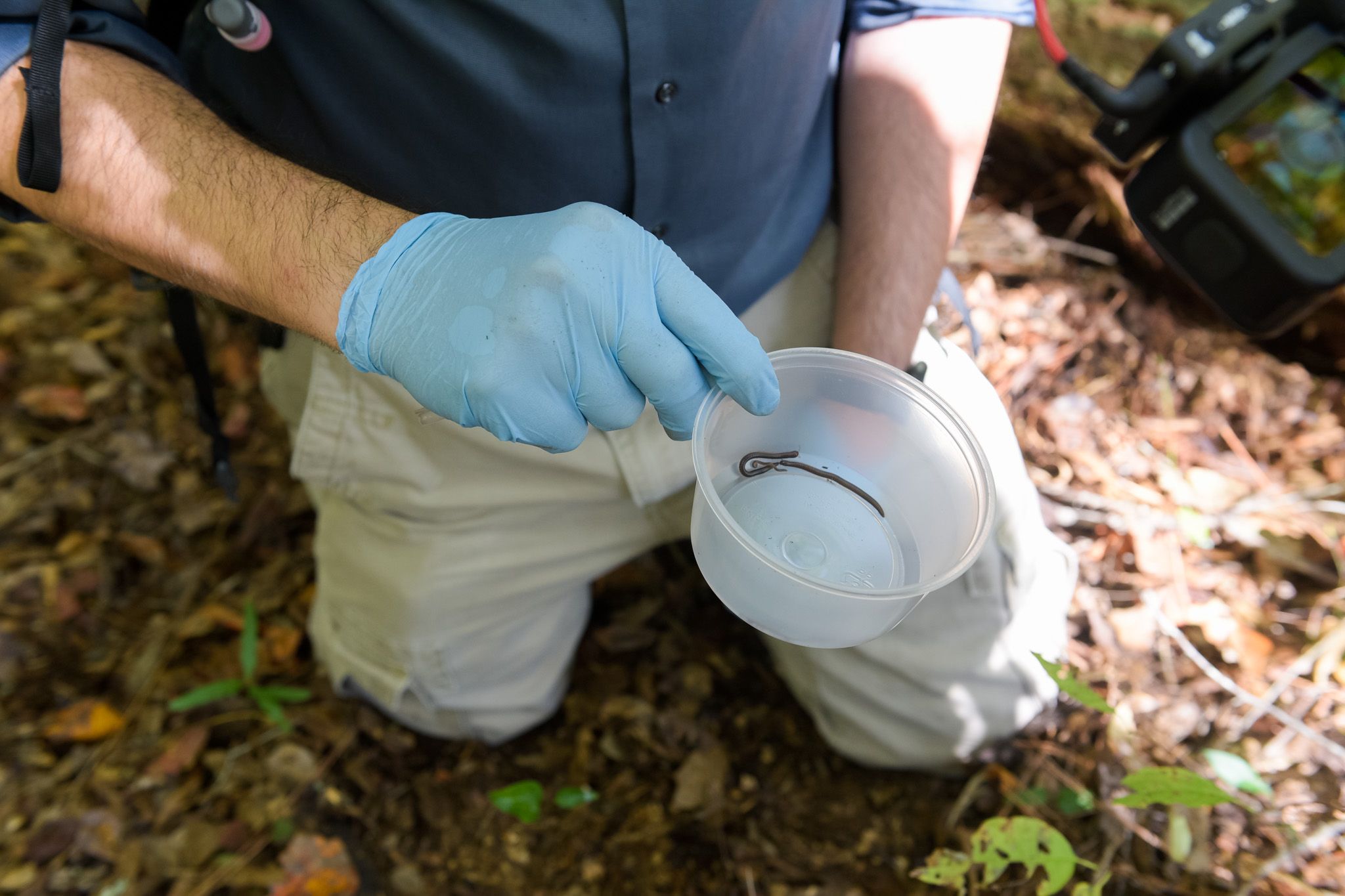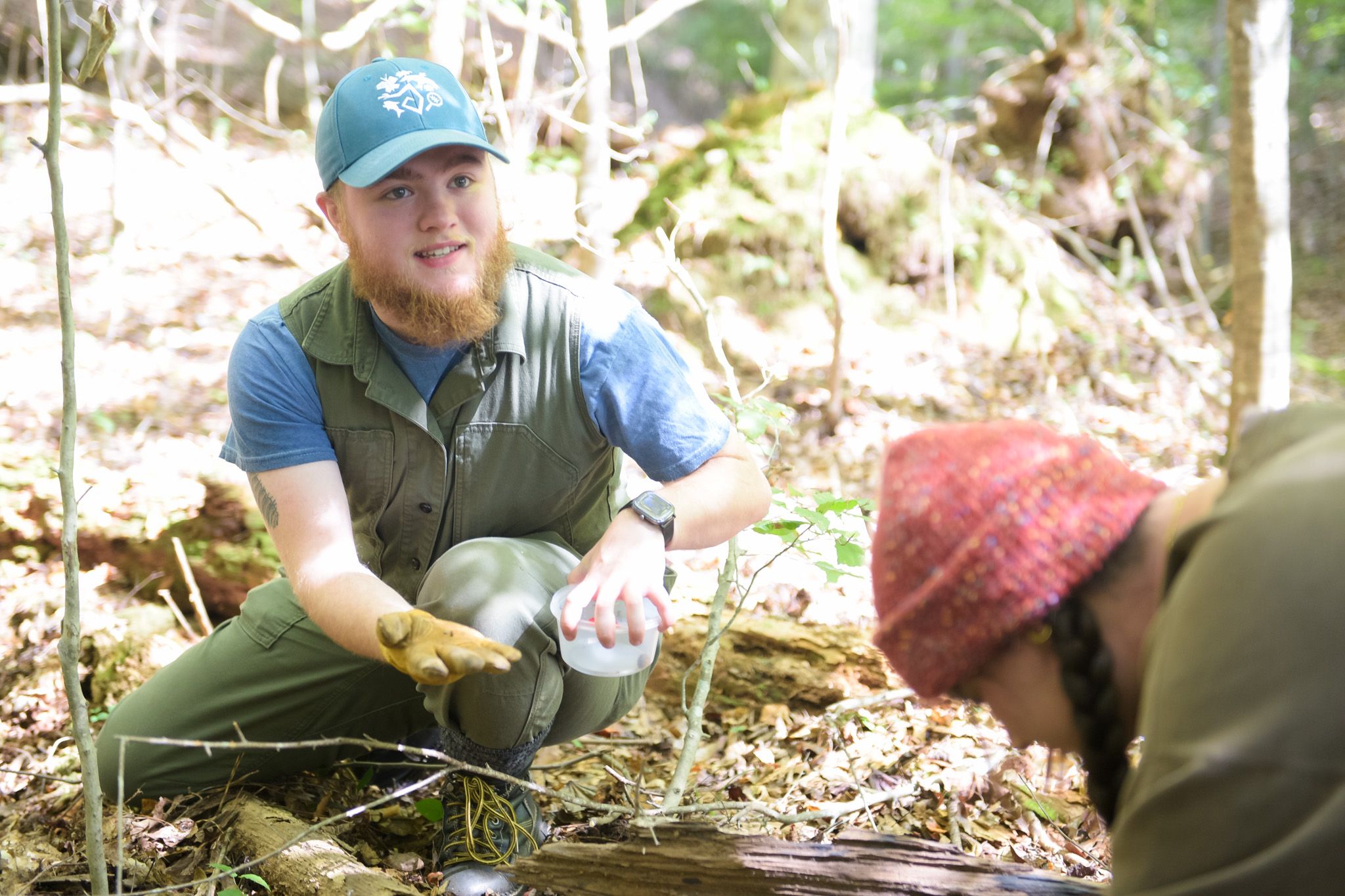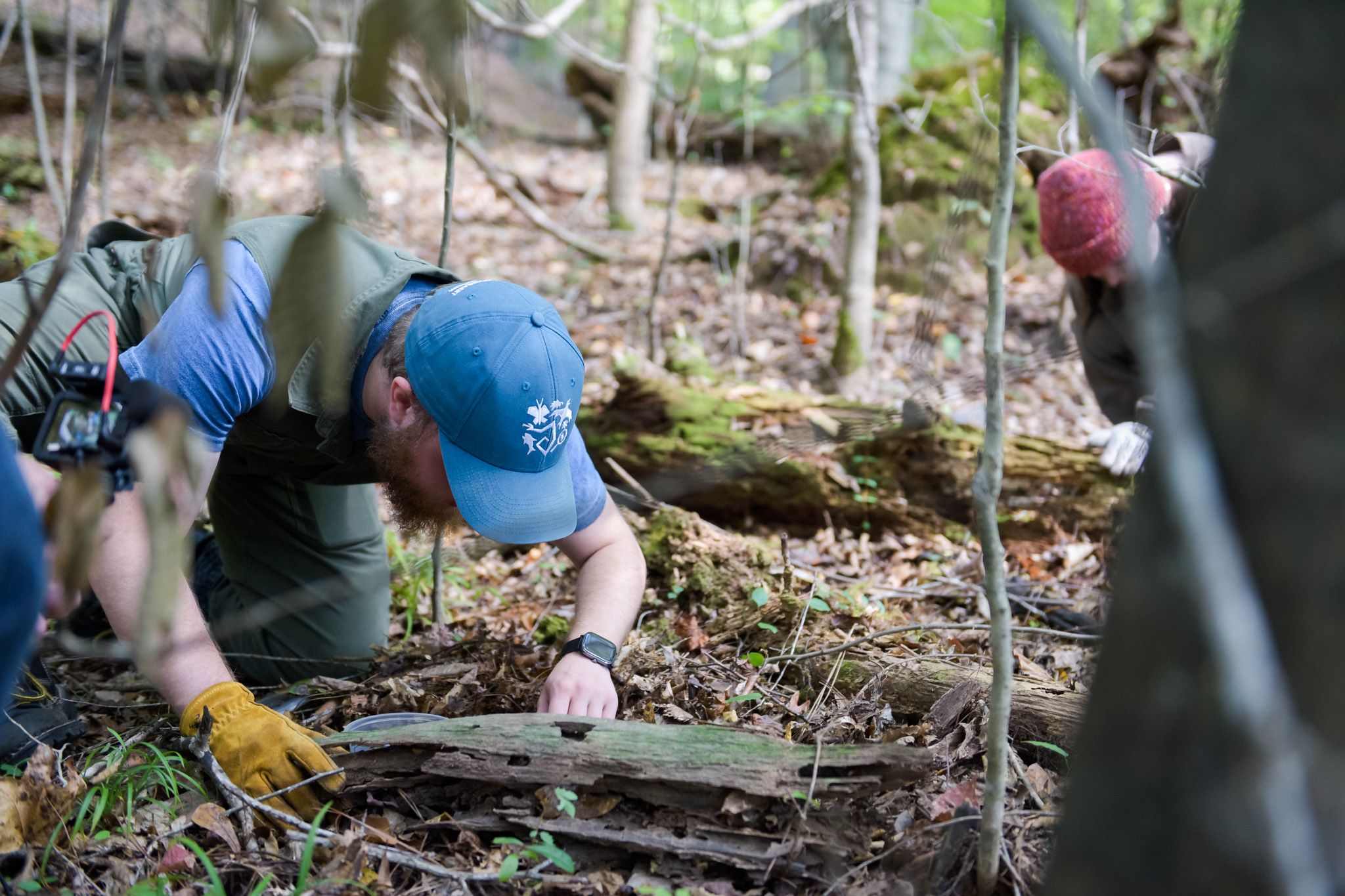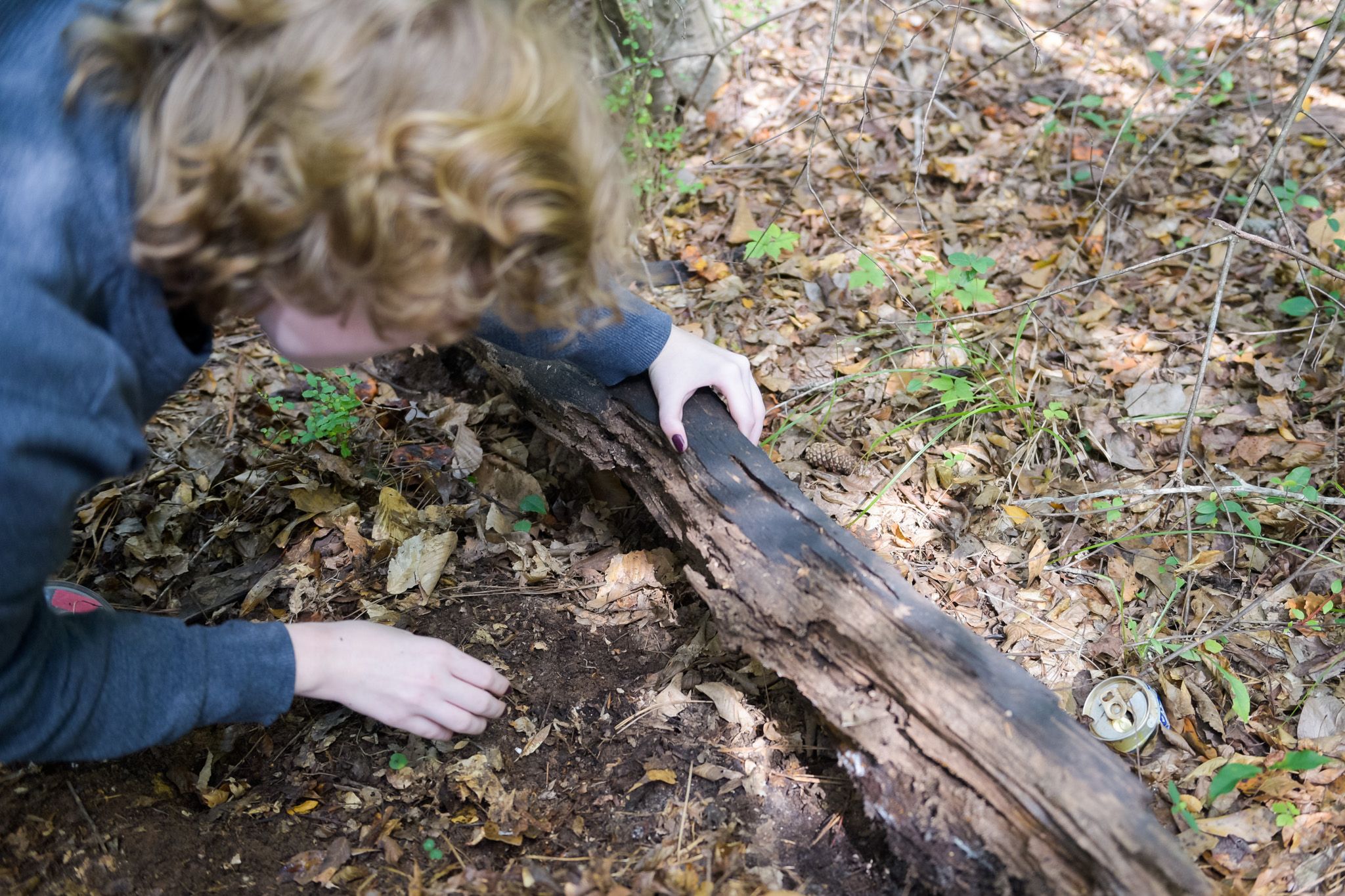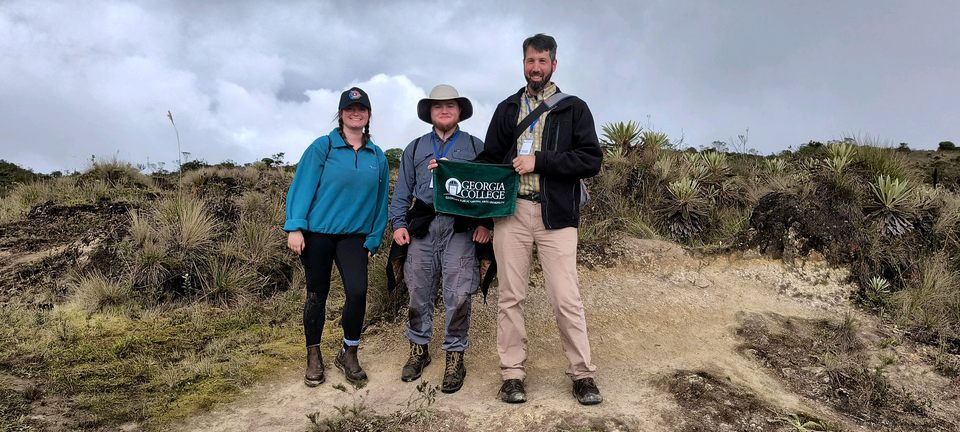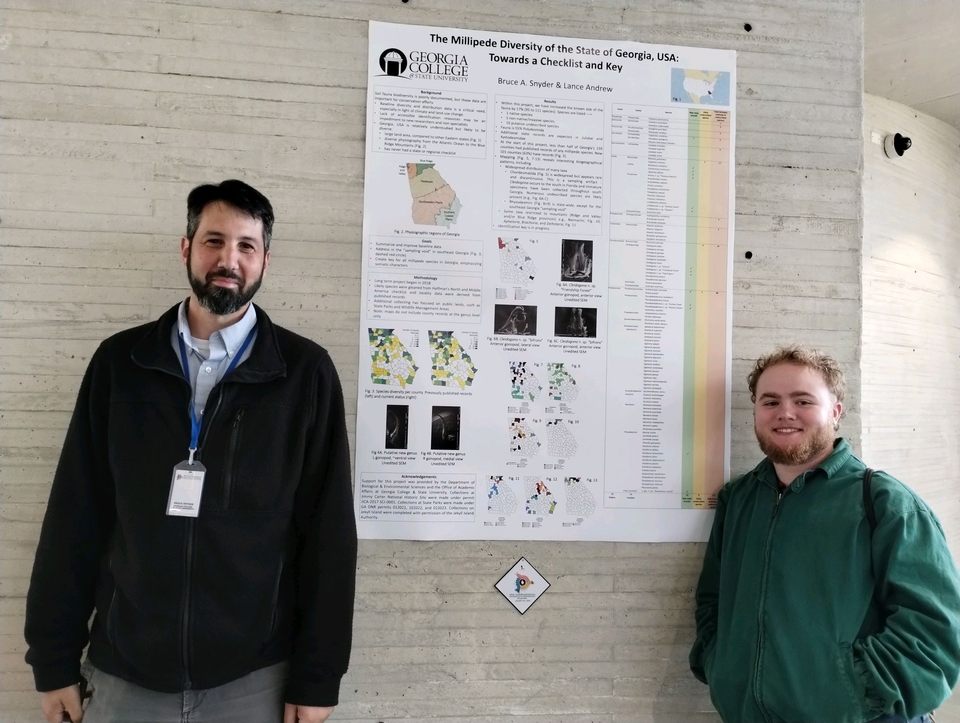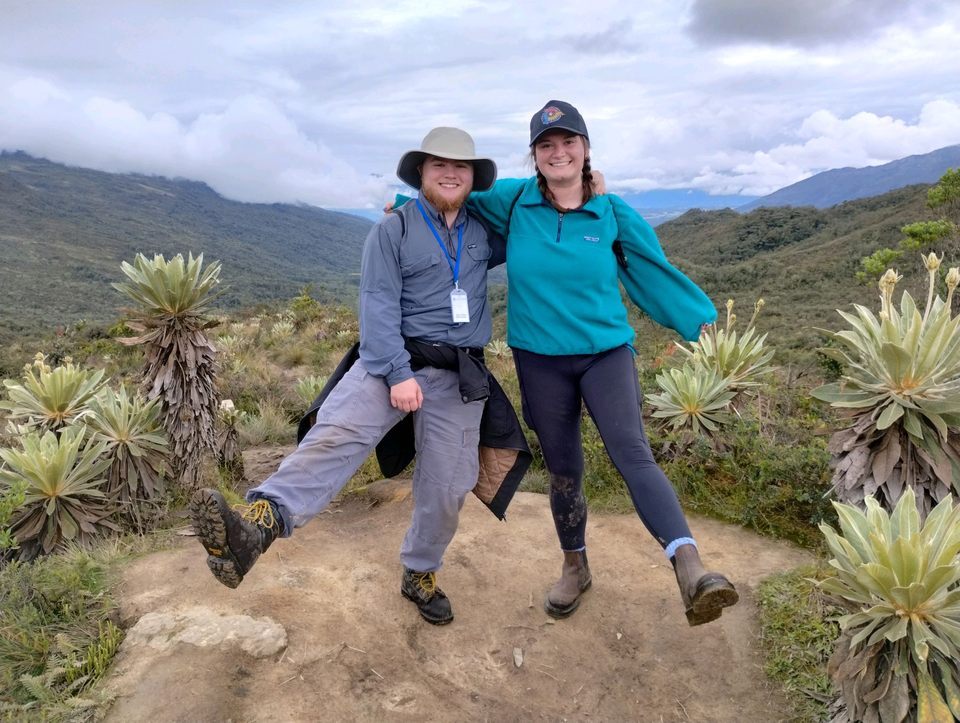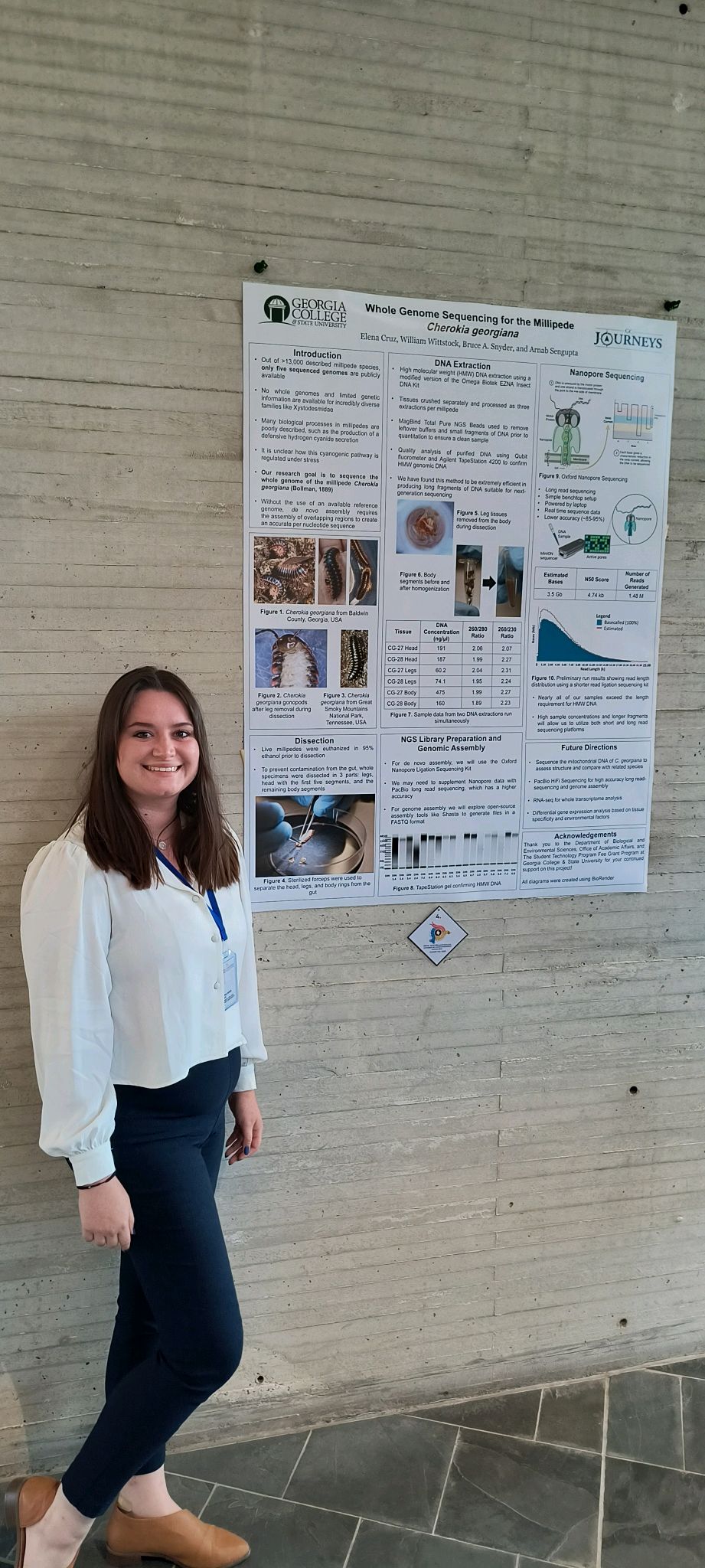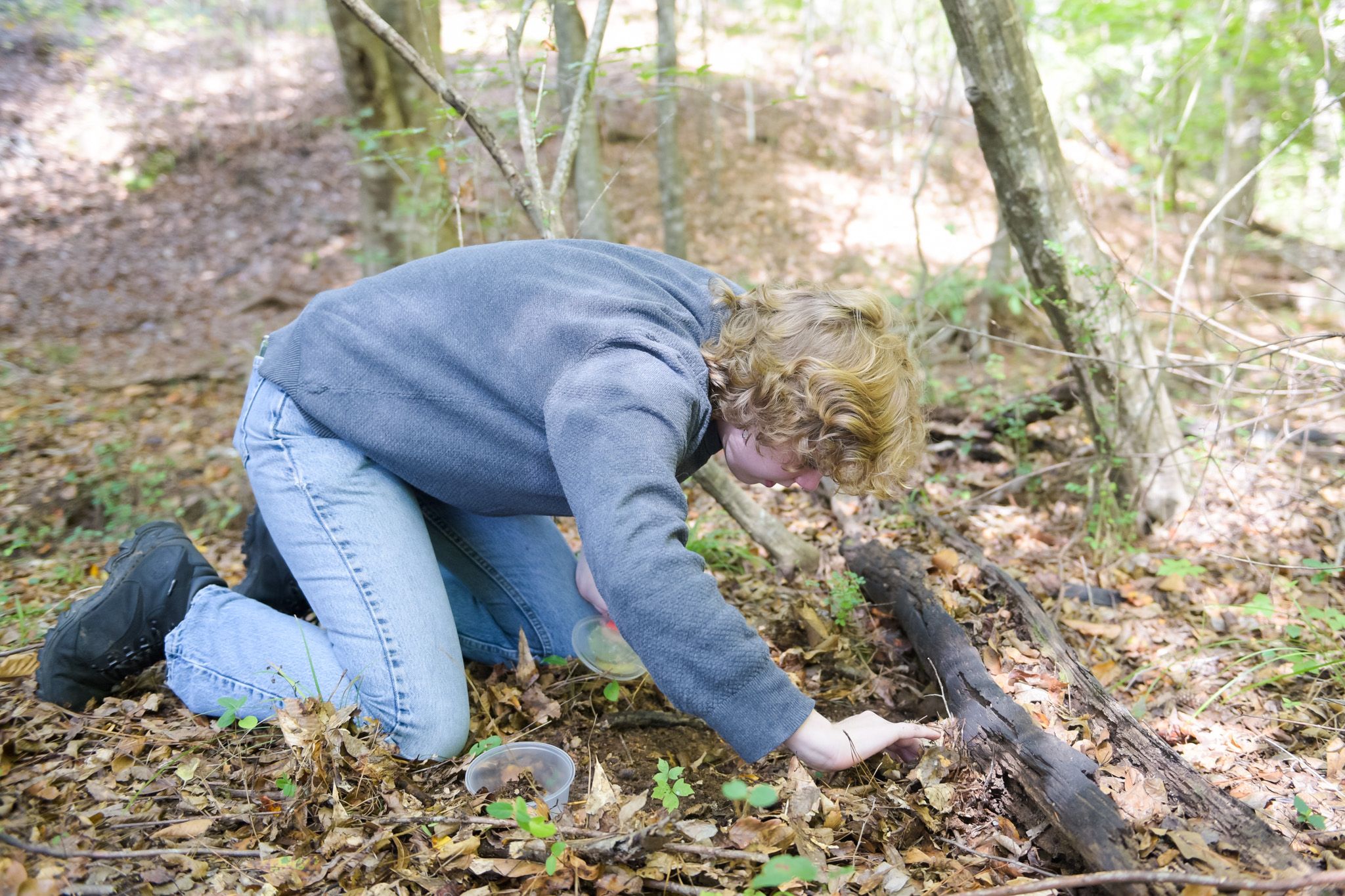GCSU ecologist and students spotlight the unknown underworld of millipedes
T o say something ‘has legs’ means it has longevity and staying power.
That surely fits millipedes then, because they’ve been around forever. Thought to be earth’s first creature to leave water and breathe on land—the creeping, burrowing arthropods are essential for healthy soil and forests.
Then there are those legs. Lots of them.
Their legs help millipedes forage and feed, making them the ultimate composters—nature’s No. 1 soldier in waste management. They’re responsible for breaking leafy material into nutritious soil for trees and plants. They speed up forest decomposition, filtering our air and water. They help reduce erosion and keep soil moist.
Yet, despite this critical contribution to the environment, only a handful of scientists in the world study the lowly, multi-segmented invertebrate. Little is known about their life. Where millipedes go, what they do, how they interact.
In fact, only two universities in the United States have millipede labs. Georgia College & State University is one of them—making its ecologist, Dr. Bruce Snyder, a rare expert.
“Understanding the biodiversity of millipedes is really important to understanding how the whole system functions and how those pieces go together in an ecosystem,” he said.

Currently three graduate students and several undergrads do research with Snyder. Last summer, the two graduate biology students—Lance Andrew of Atlanta and Elena Cruz of Douglasville—accompanied Snyder to the 19th International Congress of Myriapodology in Bogota, Colombia. In 2027, Snyder will host this global millipede convention at Georgia College.
At the conference, Andrew and Cruz presented details about their research. Andrew’s focusing on millipede diversity in Georgia. Cruz is working on a genome project, documenting the DNA sequence of a local species, Cherokia georgiana—commonly known “as the wrinkled flat-backed millipede.” Her research mixes the study of millipedes with genetic research conducted in Dr. Arnab Sengupta’s mRNA lab.
You can often find Snyder and his students in the woods at the Lake Laurel Biological Station. They get right to work—squatting and rummaging through piles of dead leaves, peeling bark from decaying logs and peering under rocks.
The group risks chiggers, ticks and poison ivy to find the ever-elusive arthropods.
 Millipedes range from a couple millimeters long to about 12 inches in some African species. They come in a variety of colors—with the most legs being counted at 1,306. Most of Georgia’s millipedes are smaller, only a few inches in length.
Millipedes range from a couple millimeters long to about 12 inches in some African species. They come in a variety of colors—with the most legs being counted at 1,306. Most of Georgia’s millipedes are smaller, only a few inches in length.
Documenting various millipedes in Georgia is an important part of Snyder’s work. He and Andrew are creating a species list and map, showing the area’s biodiversity, numbers and types.
Andrew started compiling this list as an undergraduate at Georgia College. He grew up loving bugs and wanted to be an entomologist. He changed his mind when he joined Snyder’s lab.
Now he loves millipedes so much, he had a caricature of one tattooed to his arm.
“I'm not sure why,” he said, “they're just the coolest little things to me.”
In Colombia, Andrew presented on the life cycle and behavior of Georgia’s flat-backed millipede. He successfully bred 7 batches of millipede eggs, learning about their gestation period, egg life stage and early larvae. He also presented a poster about the number of species—at that time a count of 111—found in Georgia.
“But we're turning up more just about every time we go out,” Andrew said.
Snyder confirmed they’re “constantly finding new species.” This is because millipedes are so understudied here.
“We definitely have a number of species in the lab that we're pretty sure are new to science,” Snyder said. “We're in the process of describing them. It's pretty common with millipedes to find new species. Before me, Georgia never had someone who focused on millipedes as a career.”

In the last few years, Andrew has discovered about seven new species of millipede on his own.
At first, it was pretty cool. Then, it became a bit routine.
“I’ve got this thing that science has never encountered before, right here under my microscope,” Andrew said. “And then the second one happened and the third and the fourth, fifth, sixth. At this point it’s like, ‘OK, fine, I guess someone’s gotta do it, might as well be me.’”
All kidding aside, Andrew feels lucky to be at Georgia College, where there are so many opportunities for research.
“There’s a lot of uncharted area that I get to explore here,” Andrew said. “There are a lot of undescribed species and a lot more room to contribute to something important.”
Sophomore environmental science major Sydney Irons of White, Georgia, is getting a minor in biology. She was only at the university one month when she got the chance to join Snyder’s lab. Now, she’s breaking into new territory too—by finding a way to track millipedes.
If Irons can attach a transmitter—or mark millipedes with something that responds to UV light—ecologists might learn more about where millipedes go, if they prefer to eat one leaf over another and how they spend most of their time.
But millipedes tend to be moist, slippery and wiggly.
“I'm looking into ways we can mark them and track them because, surprisingly, we don't have very many methods on marking and tracking arthropods,” Irons said. “Anything we put on them just falls off, because they're so slick.”
Right now, she’s experimenting with fluorescent powder. If that doesn’t work, Irons thinks she might be able to attach metal braces or brackets that move with the segments.

Her genome project requires sequencing the entire genetic code of the local species.
Cruz does DNA extractions to obtain high quality samples to use in sequencing. Another goal is to observe how genes are expressed, particularly under stressful conditions.
Few people have ever done this.
The general lack of genetic information on soil organisms makes Cruz feel her research is important.
With advances in technology, this work gives her a unique set of skills that can be used in many laboratory situations. Many schools must send their DNA samples out to be analyzed, but Georgia College has its own in-house sequencer.
“It’s kind of a niche field of study,” she said. “There’s a really big lack of genetic information about millipedes. I do feel like we’re pioneers on the edge of something.”
